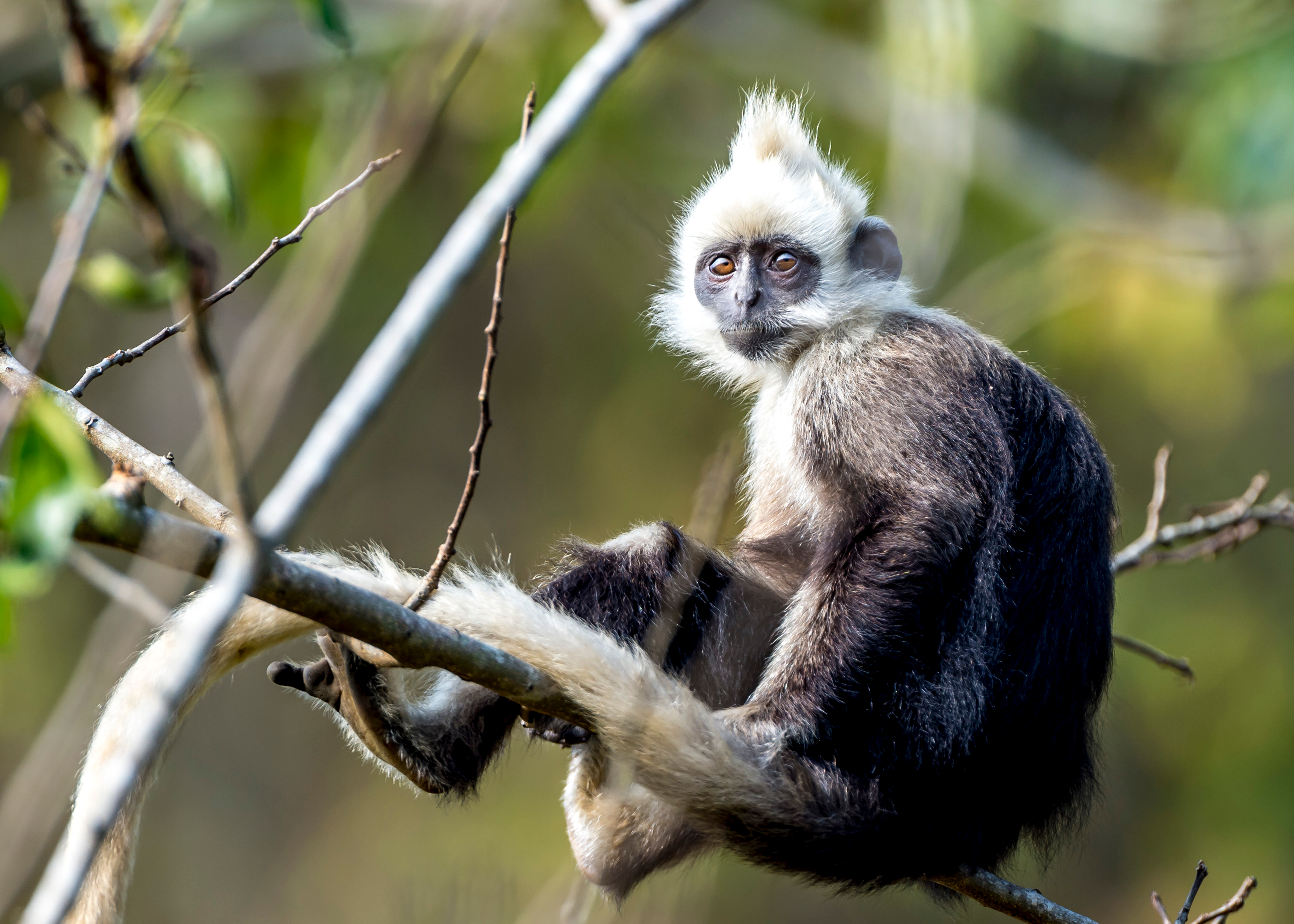Cat Ba langur
(Trachypithecus poliocephalus)

Description
The Cat Ba langur (Trachypithecus poliocephalus), also known as the golden-headed langur, is a critically endangered species of langur endemic to Cát Bà Island, Vietnam. It is among the rarest primates in the world, and possibly the rarest primate in Asia, with population size estimated at less than 70 individuals. The Cat Ba langur was considered a subspecies of François' langur (T. francoisi) until 1995. The white-headed langur (T. leucocephalus) of China was formerly considered a subspecies of T. poliocephalus until 2007. Both T. poliocephalus and T. leucocephalus are overall blackish, but the crown, cheeks and neck are yellowish in T. poliocephalus, while they are white in T. leucocephalus, as suggested by its scientific name. According to the Cat Ba Langur Conservation Project, the Cat Ba langur's skin is black and the pelage color is dark brown; head and shoulder are bright golden to yellowish-white. The tail is very long (ca. 85 cm) compared with the body size (ca. 50 cm). Babies are colored golden-orange; the pelage starts to change its color from about the fourth month on. Males and females look alike. Two adult females captured during translocation in 2012 weighted slightly more than 9 kilograms each. The Cat Ba langur, which lives on Cat Ba Island in Vietnam, is one of the 25 most endangered primates. Conservation efforts are helping to prevent this, however, and have greatly increased their population since 2003, when there were only 40. Until recently, the Cat Ba langur was not considered a species but rather a subspecies of one of two other Trachypithecus species.Cat Ba langurs are diurnal creatures and travel in groups of about four to eighteen animals. They prefer the steep limestone cliffs that make up most of Cat Ba Island. Most of the places that they are found are not accessible to humans by foot. Cat Ba Langurs spend around 66% of their time resting and the rest moving, foraging, and socializing, with the distribution changing between summer and winter. They eat less and rest more in the winter and the opposite in the summer.
Taxonomic tree:







